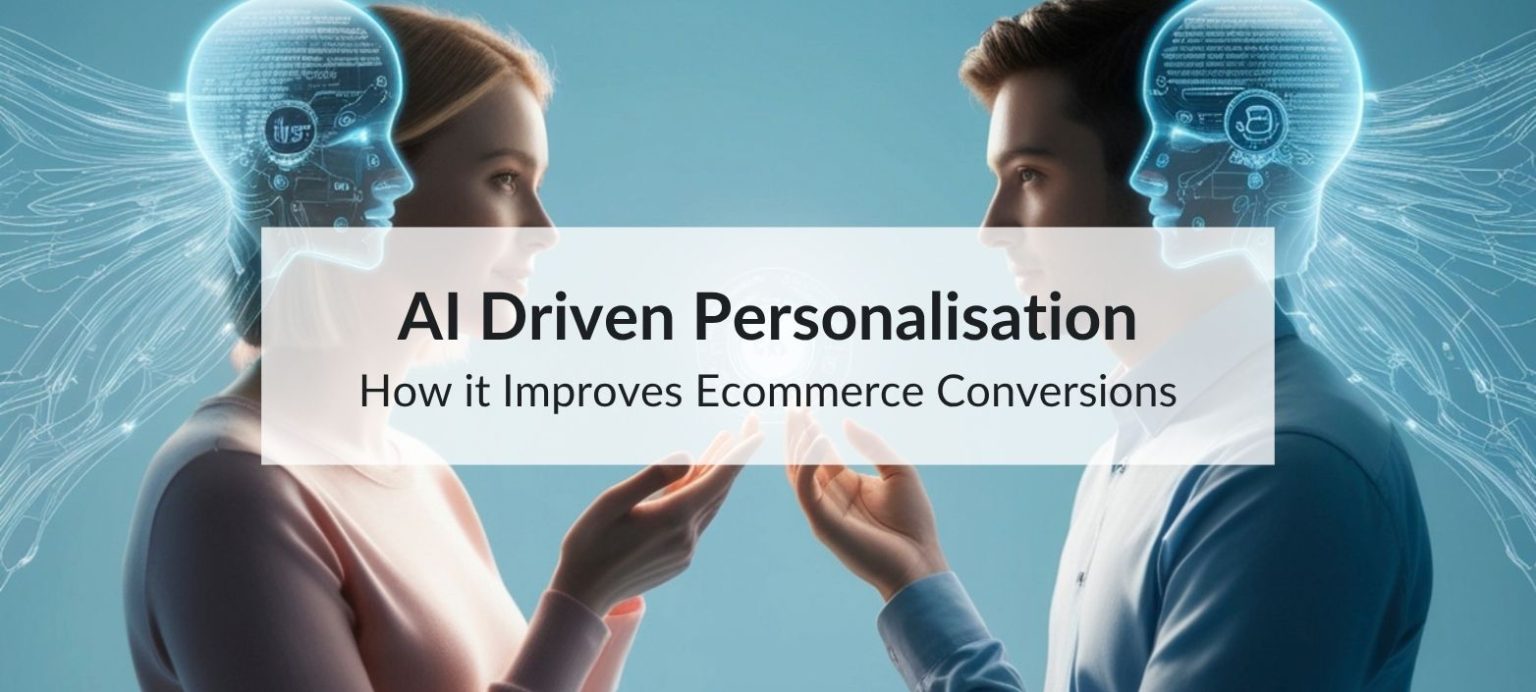AI driven personalisation is becoming really important for ecommerce businesses of all sizes. Shoppers today expect experiences that feel personal, relevant, and helpful. Imagine if your store could know what each customer wants, even before they do. Products, content, and offers could all feel made just for them. This guide will explain how it works and why some stores are seeing huge boosts in sales while others are missing out.
What is AI Driven Personalisation?
AI driven personalisation means using intelligent software to create a shopping experience that adapts to each individual visitor. Instead of treating all customers the same, AI looks at their past behaviour, preferences, and interactions to provide content and product suggestions that are most likely to engage them.
Key Parts of AI Personalisation
- Product Recommendations: Suggest products based on browsing and purchase history.
- Dynamic Website Content: Change banners, homepage sections, and product pages according to what a visitor is likely to want.
- Personalised Emails: Send offers, reminders, or product suggestions that fit each customer’s interests.
- Upselling and Cross-Selling: Recommend complementary products to increase basket size.
- Predictive Offers: Use AI to anticipate what a customer may need next.

How AI Driven Personalisation Works
AI driven personalisation works by analysing data and using algorithms to predict customer preferences. Here’s how it typically functions:
Collecting Customer Data
The first step is gathering information about each visitor. This includes:
- Pages they visit
- Products they click on or add to their cart
- Purchase history
- Time spent on specific items
- Interaction with emails and promotions
This data forms the foundation for personalisation, allowing AI to make informed decisions.
Understanding Patterns
Once the data is collected, AI looks for patterns and trends. For example, it might be noticed that customers who buy running shoes often look for sports accessories next. Recognising these patterns helps AI understand what products or content are likely to appeal to each individual.
Making Predictions
The AI uses patterns to predict what the user might want next. It considers similar customer behaviour, seasonal trends, and other relevant factors to make accurate suggestions.
Showing Personalised Content
Based on predictions, the system displays tailored content, product recommendations, or special offers. This can happen on the website, in emails, or through other marketing channels, making the shopping experience feel highly customised.
Learning and Improving
AI keeps learning from new interactions. If a visitor ignores a recommendation, the system notes it and adjusts future suggestions. This continuous feedback loop ensures personalisation becomes smarter over time.
Benefits of AI Driven Personalisation
AI driven personalisation offers many benefits that directly impact an ecommerce business.
1. More Sales
When customers see products that match their interests, they are more likely to make a purchase. Personalised recommendations have been shown to significantly increase conversion rates.
2. Better Customer Experience
A personalised shopping journey feels smoother and more intuitive. Customers can quickly find what they need without scrolling through irrelevant products, making their experience enjoyable.
3. Bigger Orders
AI can suggest complementary products, encouraging customers to add more items to their basket. This upselling and cross-selling increases average order values.
4. Loyal Customers
Personalisation builds a connection with customers. They feel understood and appreciated, which encourages repeat visits and long-term loyalty.
5. Useful Insights
Analysing personalised interactions provides valuable insights. Retailers can identify trends, measure the impact of personalisation, and make data-driven decisions for marketing and product strategy.
Real Examples from Top Brands
Several major brands use AI personalisation to great effect.
Amazon
Amazon recommends products based on your browsing and purchase history. These suggestions drive a significant portion of their sales and keep customers engaged.
Netflix
Netflix uses viewing history and user ratings to suggest shows and films. Personalised recommendations increase engagement and reduce subscriber churn.
ASOS
ASOS personalises product suggestions and email campaigns according to user behaviour, making it easier for customers to find items they are likely to buy.
How to Add AI Personalisation to Your Store
1. Check Your Data
Ensure you are collecting accurate and relevant data on customer behaviour.
2. Pick the Right Tools
Choose AI software that integrates with your ecommerce platform and meets your personalisation needs.
3. Set Goals
Decide what you want to achieve, whether it’s more sales, bigger baskets, or higher repeat visits.
4. Start Small
Test personalisation on emails or product recommendations first. Track results and refine your approach.
5. Keep an Eye on Results
Regularly monitor performance metrics and adjust your strategy to improve results over time.
Tools to Help You Personalise
Here are some tools that can help you implement AI personalisation:

Challenges and Tips
Even with AI, there are challenges to be aware of.
Challenges
- Keeping customer data private and secure
- Integrating AI with existing systems
- Avoiding too many recommendations that annoy users
Tips
- Use data responsibly and follow regulations
- Focus on meaningful personalisation that adds value
- Monitor and improve AI algorithms continuously
- Combine AI insights with creative human input
Conclusion
AI driven personalisation helps ecommerce stores sell more, grow basket sizes, and keep customers returning. The right products and content appear at the right time for each shopper, making the experience feel personal. Begin with small steps, use the right tools, and adjust your approach to see real results.

